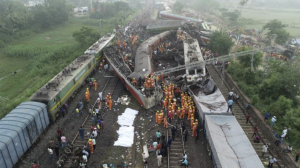NEW DELHI: Sources said, the railways have launched a high-level investigation into the train accident in Odisha, which will be led by the South Eastern Circle’s commissioner of railway safety. Under the Ministry of Civil Aviation, the commissioner of railway safety oversees all such accidents and conducts investigations. The accident will be investigated, according to an Indian Railways representative, A M Chowdhary, CRS, SE Circle. The national transporter has also said that the route did not have access to the “Kavach” anti-train collision equipment. The collision on Friday involving the Shalimar-Chennai Central Coromandel Express, the Bengaluru-Howrah Superfast Express, and a cargo train resulted in at least 238 fatalities and more over 900 injuries.Although the cause of the disaster is unknown, sources suggested a potential signalling failure. “The rescue effort has been finished. We are already beginning the restoration process. According to Amitabh Sharma, a spokesperson for Indian Railways, kavach was not accessible on this route. The railways are implementing the “Kavach” anti-train collision technology throughout its network. When a loco driver jumps a signal (Signal Passed at Danger SPAD), which is the main reason for train collisions, Kavach issues a warning. When the system detects another train on the same line within a set distance, it can instantly notify the loco pilot, take control of the brakes and stop the train. Following a head-on collision between two freight trains in Uttar Pradesh in February, the railways began a month-long safety campaign to stop incidents like derailments and loco pilots overshooting signals. Senior officers from the Railway Board, zonal railroads, and divisions were given instructions to visit various sections, crew lobbys, maintenance facilities, job sites, etc. as part of the drive.Additionally, do a “thorough review of the working practises” to verify and enforce the safe operational and maintenance procedures advised to stop accidents or strange occurrences.

